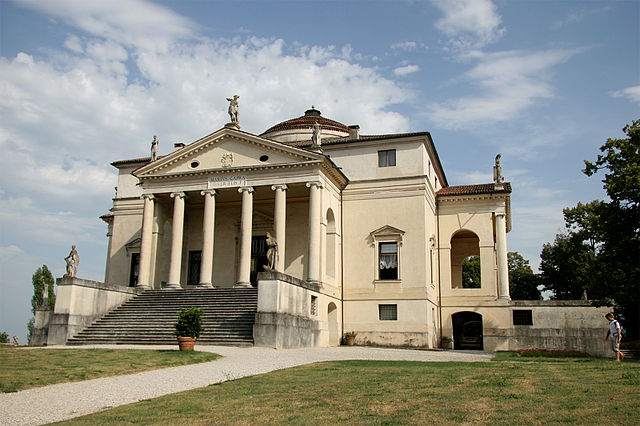Chiswick House is a Neo-Palladian style villa in the Chiswick district of London, England. A "glorious" example of Neo-Palladian architecture in west London, the house was designed and built by Richard Boyle, 3rd Earl of Burlington (1694–1753), and completed in 1729. The house and garden occupy 26.33 hectares. The garden was created mainly by the architect and landscape designer William Kent, and it is one of the earliest examples of the English landscape garden.
View from forecourt
Plan of Chiswick House
The 6th Duke of Devonshire's garden party for Tsar Nicholas of Russia and 700 guests, with giraffes in the park, from The Illustrated London News, 15 June 1844
Floor plan, showing the wings used for the patients of Chiswick Asylum, now removed
Palladian architecture is a European architectural style derived from the work of the Venetian architect Andrea Palladio (1508–1580). What is today recognised as Palladian architecture evolved from his concepts of symmetry, perspective and the principles of formal classical architecture from ancient Greek and Roman traditions. In the 17th and 18th centuries, Palladio's interpretation of this classical architecture developed into the style known as Palladianism.
A villa with a superimposed portico, from Book IV of Palladio's I quattro libri dell'architettura, in an English translation published in London, 1736
Plan for Palladio's Villa La Rotonda (c. 1565) – features of the house were incorporated in numerous Palladian-style houses throughout Europe over the following centuries.
Villa Capra "La Rotonda" (begun c. 1565) – one of Palladio's most influential designs
Basilica Palladiana, Vicenza (from 1546) – loggia with Palladian windows








